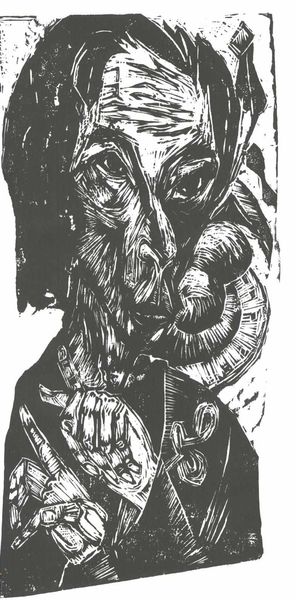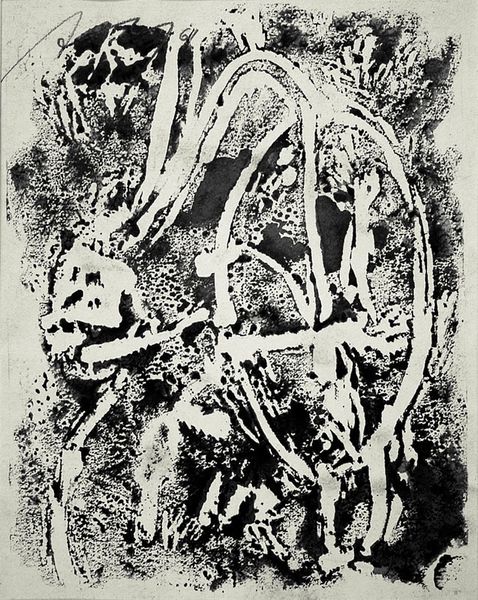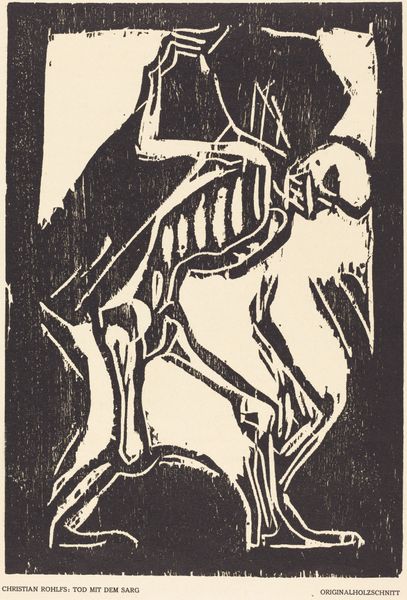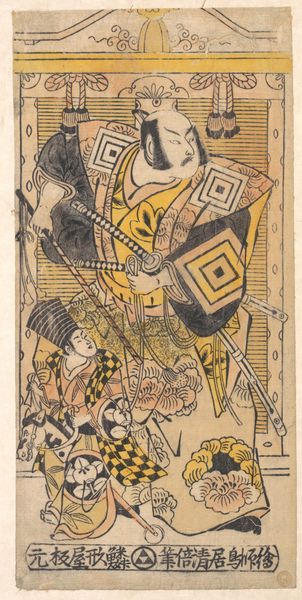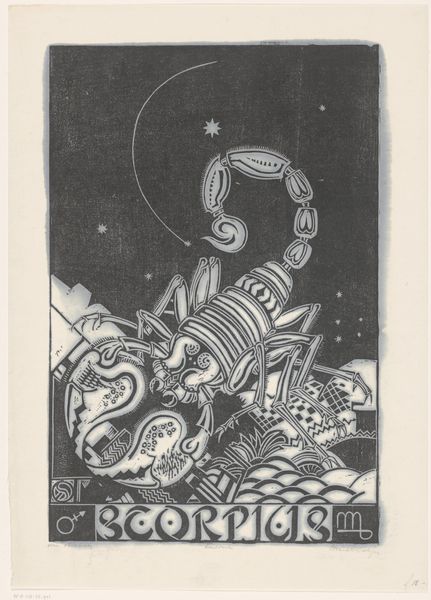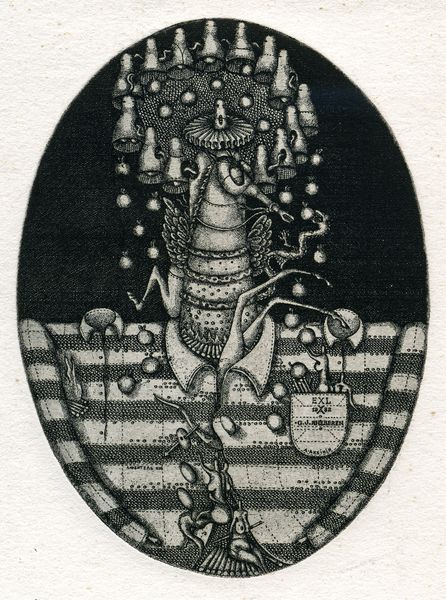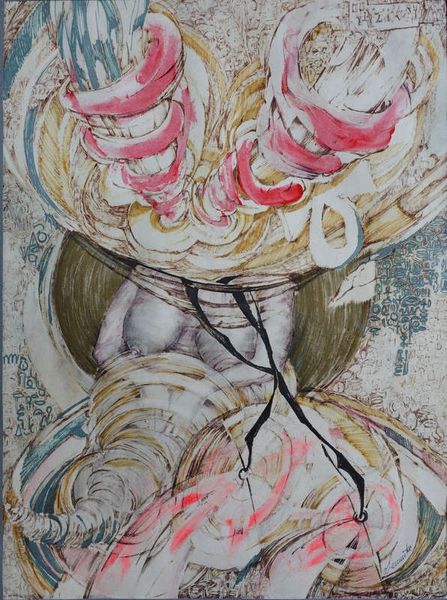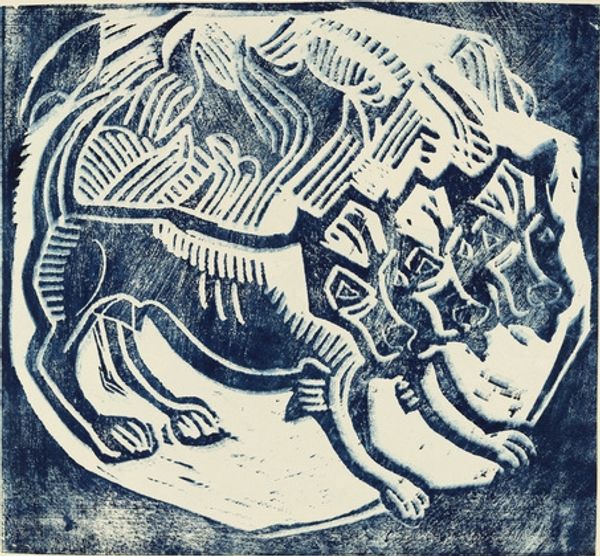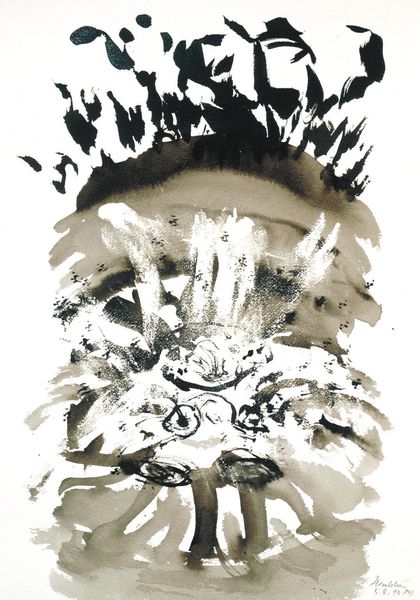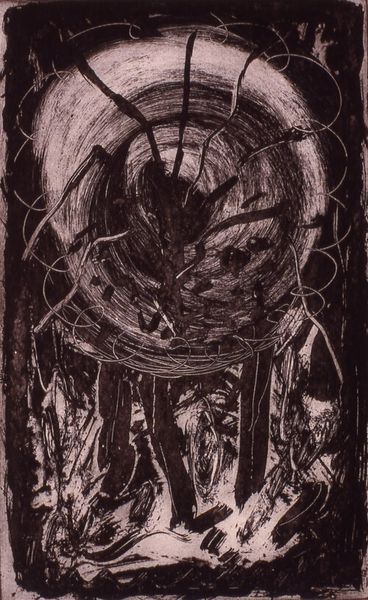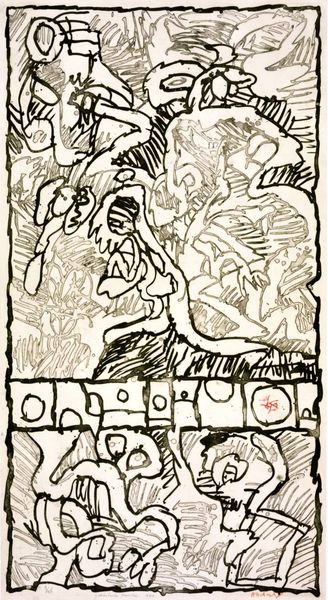
Dimensions: overall: 191.5 x 94 cm (75 3/8 x 37 in.) framed: 195.6 x 98.1 x 4.1 cm (77 x 38 5/8 x 1 5/8 in.)
Copyright: National Gallery of Art: CC0 1.0
Curator: Looking at Pierre Alechinsky's "Pont à Mousson" from 1985, I’m struck by its frenetic energy, it almost feels like a dreamscape rendered in stark black and white. Editor: It certainly grabs your attention, doesn't it? I'm immediately interested in the way Alechinsky combines printmaking techniques with what looks like mixed media. What kind of paper, what inks are being used and what were printmaking's place within 1980’s art market and it’s hierarchies. I also see it's described as both "graphic art" and "linocut print"—how does this combination affect the value of it in both fields of fine arts and printed matter, that usually stay rather divided? Curator: That's a good point. The use of printmaking places it within a broader historical context. There is some clear connection here to art informel and Cobra movement after WWII in Europe. This art and cultural shift demanded reevaluation of what materials we are able to call "Art". From the post-war art scene this led straight towards process art. Editor: Absolutely. Looking closely, the central image seems almost geological, like a layered rock formation rendered with nervous lines. It could connect to post-industrial landscapes, but also it reminds me of maps. What did printed image mean at that time for an artist like him? Did that allow his work to reach wider audience at the time? What exhibitions was he featured in? Curator: It's intriguing to consider his accessibility in a world dominated by mass media. As we mentioned he comes directly out of the Art Informel tradition, born during rebuilding process of European landscape after war, that directly critiqued dominant cultural narratives by destroying all the known mediums of artistic expression in its totality. To consider “Pont à Mousson” now forces us to consider it's original, historical radicality. Editor: I see that radicality channeled through a very deliberate approach to material and medium. Alechinsky, for me, is actively commenting on production as subject and object through its consumption during and after WWII and Cold war in Europe, it also brings an entirely new discourse around contemporary art value. Curator: Seeing it that way is helpful, as it challenges preconceived notions about fine art’s exclusive realm. It leaves me contemplating how historical traumas still echo today.
Comments
No comments
Be the first to comment and join the conversation on the ultimate creative platform.
